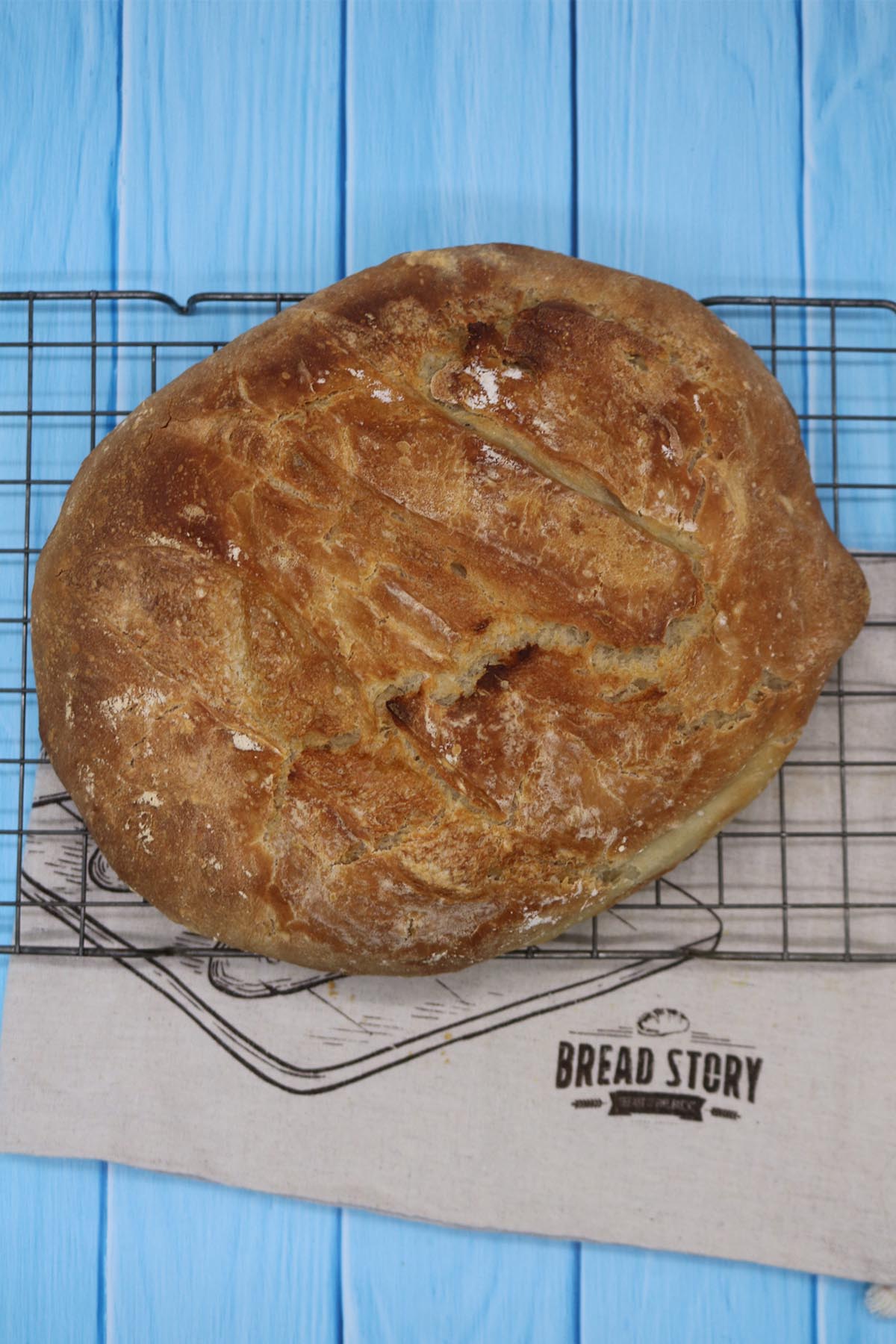
I decided I'd like to add another bread to our recipe collection...one that is more like the crusty bread you can buy from the in-store bakery in the supermarket. David literally googled 'crusty bread' and this one was one of the top results from Taste of Home. As well as there being a video to watch how it's done, there's also instructions included if you'd like to add additional flavourings. This one was a joint effort...I made the dough and David did the folding and kneading!
We'd definitely say it was a success and will most definitely be making this crusty bread recipe again and again! It has a lovely crispy crust and is soft and bubbly on the inside. A bread to enjoy on it's own, for breakfast, as a sandwich or enjoy on the side with some homemade soup, pasta or rice dishes.
Tips
- NOTE: the last proving step is overnight in the fridge (see Step 3).
- The temperature for the warm water is higher than lukewarm water (37C), so I used my Thermapen to check it.
- Instead of a disposable foil roasting pan, I used a large roasting tin and lined it with 3 layers of tin foil.
- Rather than shaping it into a round loaf, we made it more rectangle shaped.
- Click into the Taste of Home link to watch the video and to see options for adding additional ingredients/flavourings.
- I have converted the ingredient quantities from cups to grams.
Other recipes you might also like to try
Click here for all bread recipes, and here to browse soups.
Recent New Recipes
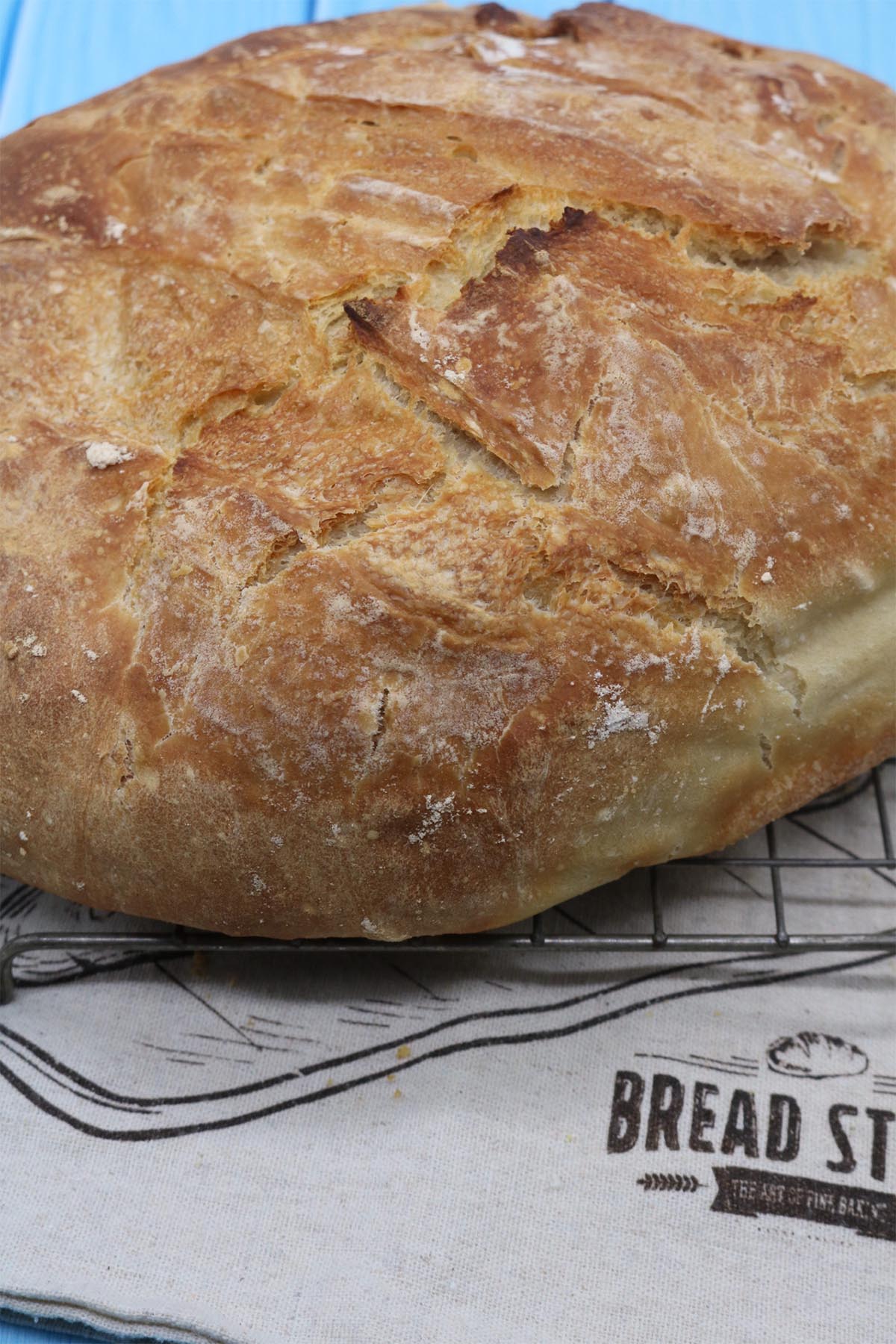
Ingredients
- 7g sachet dried yeast
- 438ml warm water (43C to 56C) – see Tips
- 525g plus 1 tbsp plain flour
- 2 tsp salt
- 1 tbsp polenta or plain flour
- olive oil and cling film, to cover bowl
- tin foil, for baking
Instructions
- In a large bowl, dissolve the yeast in the warm water (see Tips). Using a rubber spatula, stir in 525g flour and the salt to form a soft, sticky dough. Do not knead. Cover with lightly greased cling film and let it rise at room temperature for 1 hour.
- Stir down the dough (it will be sticky). Turn it onto a floured surface and with floured hands pat it into a 22cm square. Fold the square into thirds, forming a 22cm x 7cm rectangle. Fold the rectangle into thirds, forming a 7cm square. Place it in a large greased bowl, turning once to grease the top. Cover again and let it rise at room temperature until almost doubled, about 1 hour.
- Punch down the dough and repeat the folding process. Return the dough to the bowl; refrigerate, covered, overnight.
- Grease the bottom of a disposable foil roasting pan (see Tips) with sides at least 8cm; dust the pan with the polenta. Turn the dough onto a floured surface. Knead gently 6 to 8 times, then shape into a 15cm round or 20 to 25cm rectangle loaf. Place it into the prepared pan and dust the top with the remaining 1 tbsp of flour. Cover the pan with lightly greased cling film and let it rise at room temperature until the dough expands, about 1 hour 15 minutes.
- Preheat the oven to 260C. Using a sharp knife, make 1 slash across top of the loaf if you make it a round one, or 3 slashes if you make it a rectangle shape. Cover the pan tightly with tin foil. Bake the loaf on the lowest oven shelf for 25 minutes.
- Reduce the oven setting to 230C. Remove the foil and bake the bread until it is a deep golden brown, 25 to 30 minutes. Remove the loaf to a wire rack to cool.
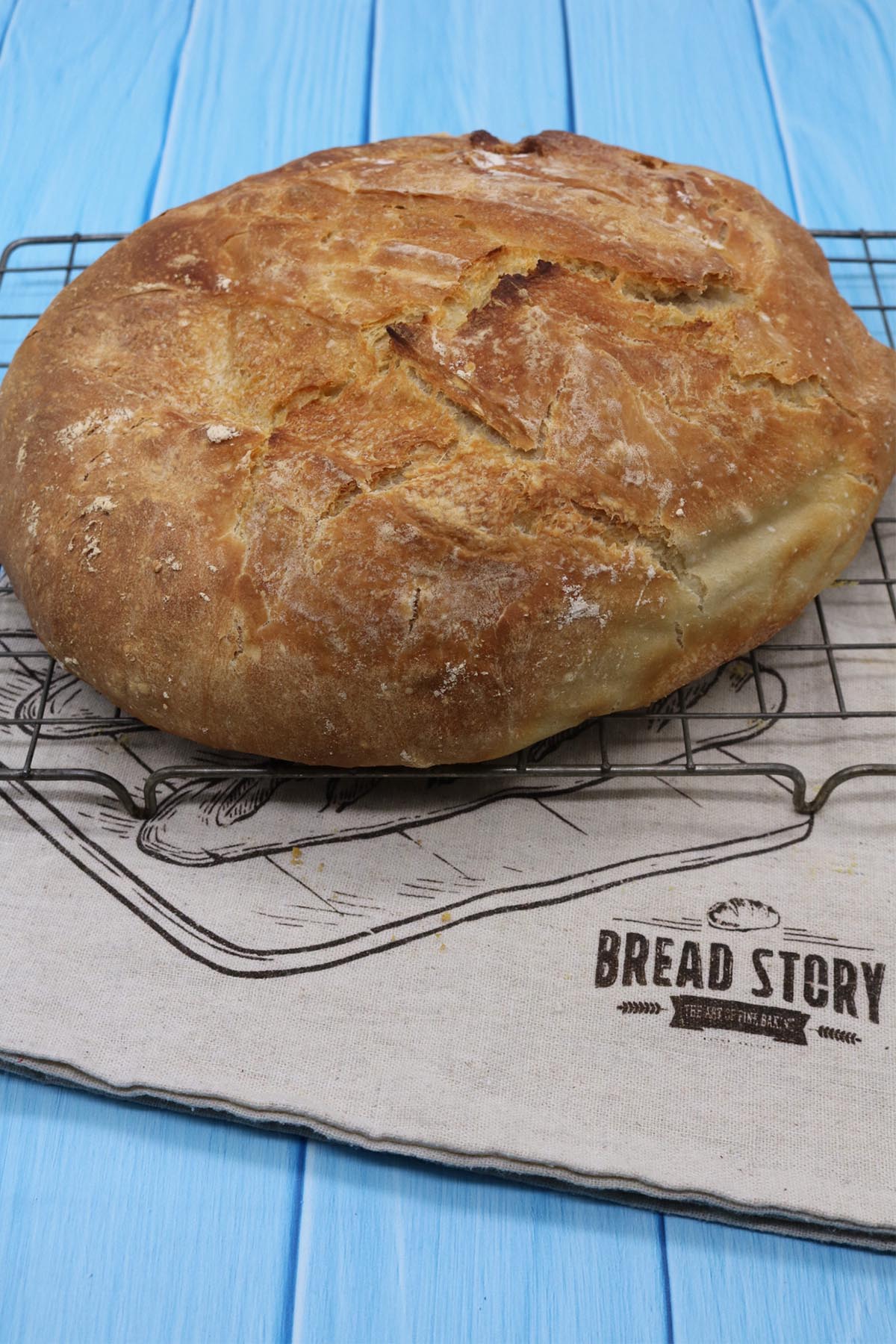
Did you make this recipe?
I’d love to hear how it went…both good and bad!
Please go to the bottom of the page to rate the recipe and/or leave your comments.
It would also be great if you could take a photo and tag Felly Bull on social media, thanks.
Subscribe to receive our new and highlighted recipes in your email inbox each week...plus receive our new e-Cookbook for free!!!
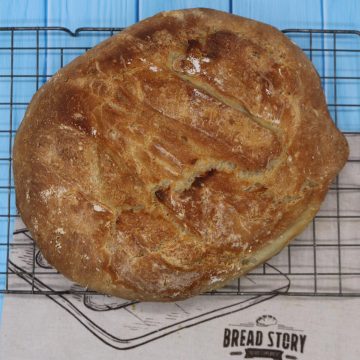
Crusty Bread
Ingredients
- 7g sachet dried yeast
- 438ml warm water (43C to 56C) - see Tips
- 525g plus 1 tbsp plain flour
- 2 tsp salt
- 1 tbsp polenta or plain flour
- olive oil and cling film to cover bowl
- tin foil for baking
Instructions
- In a large bowl, dissolve the yeast in the warm water (see Notes). Using a rubber spatula, stir in 525g flour and the salt to form a soft, sticky dough. Do not knead. Cover with lightly greased cling film and let it rise at room temperature for 1 hour.
- Stir down the dough (it will be sticky). Turn it onto a floured surface and with floured hands pat it into a 22cm square. Fold the square into thirds, forming a 22cm x 7cm rectangle. Fold the rectangle into thirds, forming a 7cm square. Place it in a large greased bowl, turning once to grease the top. Cover again and let it rise at room temperature until almost doubled, about 1 hour.
- Punch down the dough and repeat the folding process. Return the dough to the bowl; refrigerate, covered, overnight.
- Grease the bottom of a disposable foil roasting pan (see Notes) with sides at least 8cm; dust the pan with the polenta. Turn the dough onto a floured surface. Knead gently 6 to 8 times, then shape into a 15cm round or 20 to 25cm rectangle loaf. Place it into the prepared pan and dust the top with the remaining 1 tbsp of flour. Cover the pan with lightly greased cling film and let it rise at room temperature until the dough expands, about 1 hour 15 minutes.
- Preheat the oven to 260C. Using a sharp knife, make 1 slash across top of the loaf if you make it a round one, or 3 slashes if you make it a rectangle shape. Cover the pan tightly with tin foil. Bake the loaf on the lowest oven shelf for 25 minutes.
- Reduce the oven setting to 230C. Remove the foil and bake the bread until it is a deep golden brown, 25 to 30 minutes. Remove the loaf to a wire rack to cool.
Notes
- NOTE: the last proving step is overnight in the fridge (see Step 3).
- The temperature for the warm water is higher than lukewarm water (37C), so I used my Thermapen to check it.
- Instead of a disposable foil roasting pan, I used a large roasting tin and lined it with 3 layers of tin foil.
- Rather than shaping it into a round loaf, we made it more rectangle shaped.
- Click into the Taste of Home link to watch the video and to see options for adding additional ingredients/flavourings.
- I have converted the ingredient quantities from cups to grams.

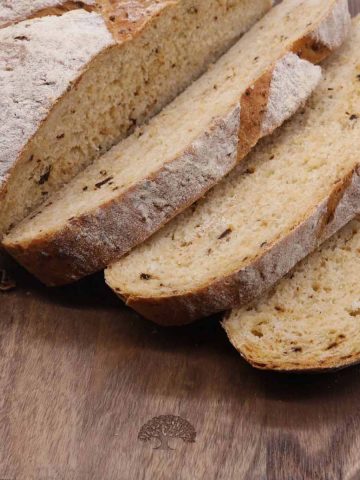
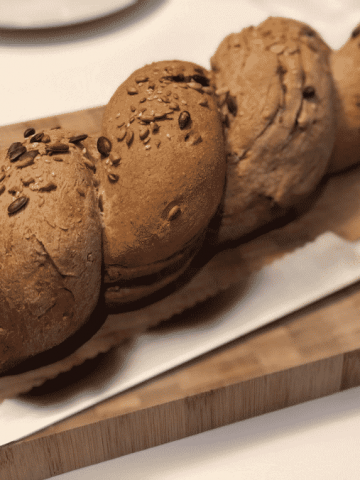
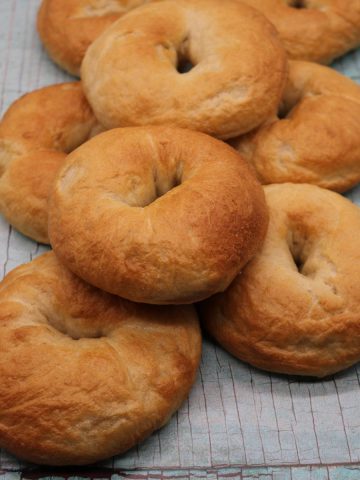
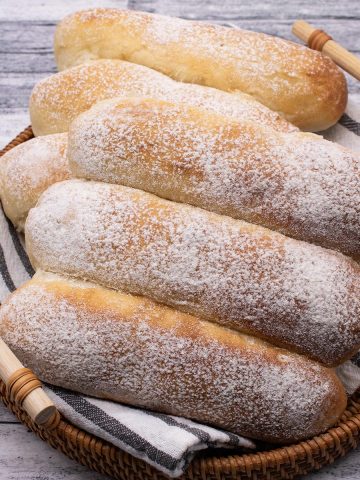








LEAVE A COMMENT AND RATE THIS RECIPE